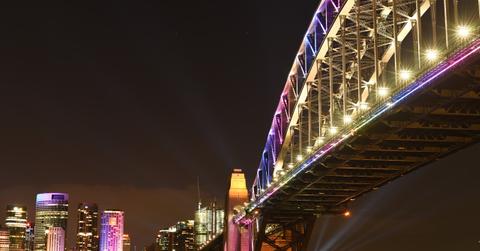Tesla Battery Saved Electrical Grid In Australia When Coal Failed
Tesla's battery facility in South Australia is supposed to back up the Hornsdale Wind Farm, but it kicked into action when a coal-fired power plant over 600 miles away was struggling.
Updated Nov. 19 2020, 9:38 p.m. ET
Tesla’s new battery backup facility at an Australian wind farm has already passed a hefty test when a power outage occurred this week. Interestingly enough, instead of it coming to the aid of the renewable energy, it helped out a failing coal-fired power plant. How did this happen? In short, the battery left the fossil fuel’s backup service without anything to do as it was pushing energy into the grid.
Elon Musk was able to hold his promise of a 100-megawatt Tesla Powerpack being built in a matter of months at the Hornsdale Wind Farm in South Australia. It became active when it detected that the Loy Yang coal power plant went offline for an undisclosed technical reason. The battery was able to inject over seven megawatts into the national grid in record time -- 0.14 seconds.
The coal-fired power plant holds a capacity of 560 megawatts, so its departure from the national grid was quite noticeable. Normally, the Gladstone power station hosting a backup generator would kick in, taking anywhere from 10 to 30 minutes to put power into the electrical grid. Tesla’s batteries, located 621 miles away from the Loy Yang plant, was able to accomplish this task in a fraction of a second.
“That’s a record and the national operators were shocked at how quickly and efficiently the battery was able to deliver this type of energy into the market,” Energy minister Tom Koutsantonis said to a local radio station.
Tesla’s battery facility, also known as the Hornsdale Power Reserve, isn’t contracted to push energy into the grid when a source fails, but it was all done automatically. It was able to read the megawatt total dropping by nearly 200 megawatts and the frequency going down from 50 Hz to 49.8 Hz just after 1:59 AM local time.
The response from the battery was faster than the Australian Market Energy Operator’s ability to record it. It takes up to six seconds for the emergency shift at the backup coal generator to respond, and the battery’s action ran circles around it. Since the battery doesn’t have any moving parts, it’s able to fire energy immediately.
Tesla hasn’t commented on their Powerpack’s actions, but RenewEconomy details other trips from coal-fired power plants involving Tesla’s battery stepping in. Hornsdale’s backup solution has ended up stabilizing the electrical grid. It’s not preventing massive blackouts from happening, but it’s able to keep any issues in delivery from cropping up.
